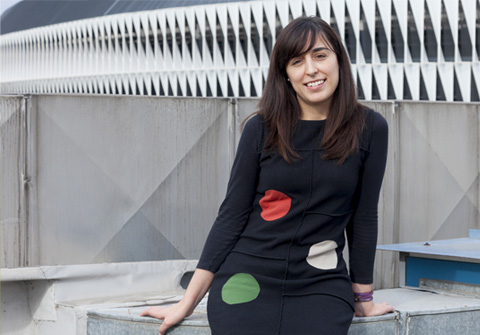The Environmental Radioactivity research group of the Faculty of Engineering in Bilbao has conducted a piece of research that has determined the radionuclide concentration in the ambient air of Bilbao. The data obtained show that the radionuclide activity concentrations specified are close to the minimum levels laid down by the United Nations Scientific Committee on the Effects of Atomic Radiation (UNSCEAR).
The radiological quality of the air in Bilbao is good
Research by the UPV/EHU-University of the Basque Country has concluded that there is no significant impact from past and present industrial and sanitary activities
First publication date: 26/01/2016

The UPV/EHU's Low-level Activity Measurements Laboratory is responsible, among other things, for radiological monitoring in the BAC-Basque Autonomous Community (region) within the framework of the networks set up by the National Council for Nuclear Safety (CSN). This radiological monitoring involves analysing various radionuclides in the different environmental compartments, such as inland and marine waters, soil, biota and ambient air. Radionuclides are unstable particles (nuclei) owing to their nuclear composition which on disintegrating emit particles (alpha or beta) and/or radiation in a process known as radioactivity.
Researchers in the Department of Nuclear Engineering and Fluid Mechanics of the Faculty of Engineering in Bilbao have conducted a study to determine the radionuclide activity concentration in the air of Bilbao. Among these radionuclides, the short-lived ones "are the ones that contribute most to the inhalation dose", explained Saroa Rozas, researcher in the Environmental Radioactivity research group. The members of the group carried out measurements and ongoing sample taking in situ of suspended particles every week throughout the year, between June 2013 and June 2014. The measurements were made at the air sample taking station located on the roof of the faculty itself. Bilbao was regarded as a suitable location to carry out a study of this type owing to its recent industrial past, which may have influenced and may still be exerting an influence on the radiological quality of the city's air, and because it is an urban area surrounded by mountain ranges.
The results obtained show that the specific radionuclide activity concentrations, belonging to the radioactive chains of uranium and thorium, in addition to 7Be and 40K, are around the minimum levels published by the United Nations Scientific Committee on the Effects of Atomic Radiation (UNSCEAR), which take into consideration the concentrations in different parts of the world. Other radionuclides of artificial origin are not present in the ambient air of Bilbao or are found at very low activity concentrations in the air.
An innovative methodology
Determining the concentration of radionuclides in the ambient air involves a certain complexity, since the fact that some radionuclides have relatively short lifetimes is coupled with the fact that radionuclides are released from the ground in the form of gas or particulates and that they are formed in the atmosphere as a result of the disintegration of the precursors of the radioactive chains. What is more, the radionuclide concentration in the ambient air may be affected by emissions from specific industrial and sanitary activities, with the result that they may occasionally reach unusual levels and may lead to increased exposure for people. So determining radionuclide concentration is not only useful in finding out the radiological quality of the air but also for estimating the radiological hazard for people and establishing precautionary or corrective measures whenever they are necessary.
As Rozas explained, "the main innovation in this research is the methodology used, the procedure followed to be able to determine the short-lived radionuclide activity concentration. It is complex as it has to be carried out quickly, certain emission energies of the radionuclides have to be selected, etc." What is more, "atmospheric capture terms have been included and the sample taking, sample preparation and measurement processes have been applied to the equations used with respect to radioactive disintegration," added the researcher. This procedure could be used in other cases. "In fact, this analytical method itself has been used to determine the radionuclide activity concentration in an industrial activity such as welding".
Additional information
The Environmental Radioactivity research group of the Department of Nuclear Engineering and Fluid Mechanics of the Faculty of Engineering in Bilbao is formed by Margarita Herranz, Raquel Idoeta, Natalia Alegría, Saroa Rozas and Fernando Legarda.
Bibliographic reference
- "Radiological characterisation and radon equilibrium factor in the outdoor air of a post-industrial urban área"
- J. Environ. Radioact. 151 (1), 126–135
- DOI: 10.1016/j.jenvrad.2015.09.023

